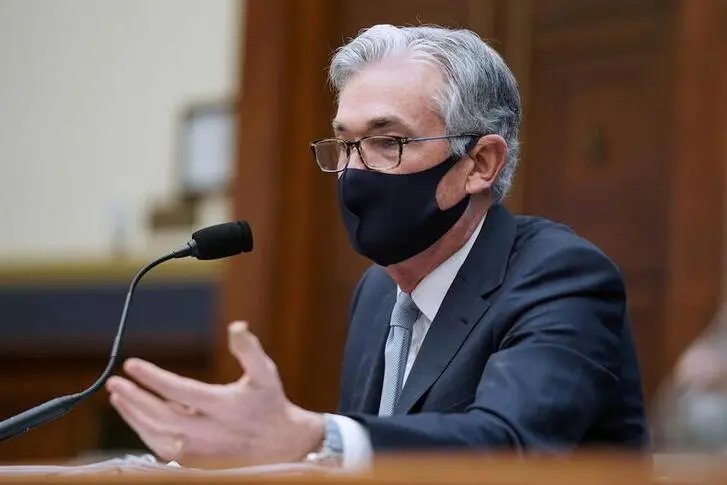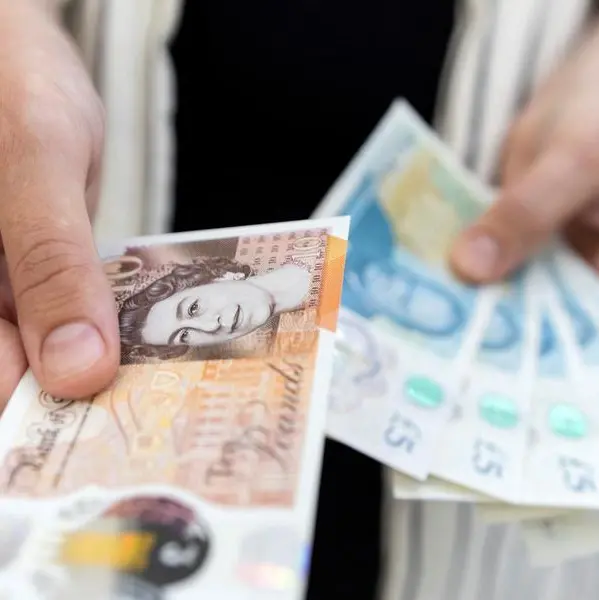PHOTO
NEW YORK - Some investors may be getting ahead of themselves as they price in a move by the Federal Reserve to pivot away from an ultra-easy monetary policy sooner than most expected just weeks ago.
Two key market indicators - rising yields on U.S. Treasury Inflation-Protected Securities (TIPS) and eurodollar futures - are suggesting a tightening of Fed policy is looming on expectations of a strong economic recovery in the second half as COVID-19 vaccine rollouts gather pace.
But those expectations may prove premature if U.S. jobless numbers remain stubbornly high and the Fed’s patience after the 2008 global financial crisis is anything to go by.
Yields on TIPS have climbed across the curve so far this year, from five-year to 30-year debt. U.S 30-year TIPS yield, for one, turned positive last week and on Thursday hit 0.214%, its highest since March last year. Since early January, that yield has increased by more than 60 basis points.
U.S. 10-year TIPS yield has risen more than 40 basis points since the beginning of the year. On Thursday, it touched -0.844%, the highest since July 2020.
Typically purchased when investors believe higher inflation is on the horizon, TIPS prices rose during the pandemic. Their yields are “real,” i.e., the relevant Treasury bond interest rate, minus inflation, and went negative for all maturities.
The so-called TIPS breakeven inflation rates are a gauge of investor inflation expectations. Those are the calculated difference between the TIPS yield and the nominal Treasury yield and have also been rising.
The 5-year TIPS at 2.38% is higher than the 10- or 30-year, suggesting the market thinks any rise in inflation would be of short duration. All are slightly above the Fed’s 2% target for average inflation over time and well above the 1.4% that inflation is currently running.
“The higher TIPS yield is suggesting that the market has become a bit nervous about a faster pace of economic recovery and, hence a faster exit by the Federal Reserve from monetary accommodation,” said Gennadiy Goldberg, senior rates strategist at TD Securities in New York.
Fed Chairman Jerome Powell, however, said on Tuesday it was nowhere near tightening U.S. monetary policy or scaling back its massive securities buying program to support the market.
Interest rates will remain low and the Fed’s $120 billion in monthly bond purchases will continue “at least at the current pace until we make substantial further progress towards our goals ... which we have not really been making,” Powell said in a testimony before the U.S. Senate Banking Committee.
Analysts said, however, the situation could be a lot different in the second half of the year when the vaccine distribution becomes more widespread and the fiscal stimulus package creates jobs and fuels more consumer spending.
The beginning of tightening cycles tends to move slowly and markets typically make bets ahead of the Fed, said Rob Robis, chief global fixed income strategist at BCA Research in New York.
“You may start hearing conversations about tapering asset purchases in the second half of the year especially when the vaccine rollout goes well and the economy shows 4%-5% growth numbers,” Robis said. “There are a lot of things out there that can make the Fed nervous about its current policy setting.”
EURODOLLAR FUTURES BETTING ON EARLY RATE HIKE
Eurodollar futures, which track short-term U.S. interest rate expectations over the next few years, are pricing in a U.S. rate hike by March 2023. This pricing has been pulled forward from late-2023 in the past few weeks, and going back to last August, as late as mid-2024.
Other rate sentiment barometers such as fed funds futures do not suggest just yet a shift toward tightening in 2023.
That said, just because the futures market has been suggesting a hike in 2023 and some analysts are betting on a move away from an easy monetary policy sooner rather than later, doesn’t mean it will happen.
The Fed was on hold for seven years after the global financial crisis in 2008. Throughout that period, market participants had predicted a rate increase within the next 12-18 months, yet the Fed only resumed hiking rates in 2015.
“I don’t believe the Fed will take any action to remove the punchbowl in 2021,” said Richard Saperstein, chief investment officer at Treasury Partners. “I believe they will remain exceptionally accommodative until the 10 million unemployed workers are back on the payroll.”
Padhraic Garvey, global head of debt and rates strategy, at ING believes though that the current recession feels different and overall there are clear risks the Fed could taper its asset purchases by the end of the year even though the U.S. central bank repeatedly said it’s not doing so.
The general market consensus was for the Fed to start reducing asset purchases in 2023.
Garvey noted the Fed could taper in a “soft” fashion much as the Bank of Canada did, moving purchases out the curve, consequently containing long-end rates.
“Without stepping into the whole pandemic vaccine health arena, we are optimistic that there would be a boom in the economy,” said Garvey.
Reporting by Gertrude Chavez-Dreyfuss; Editing by Alden Bentley and Lincoln Feast.
© Reuters News 2021












